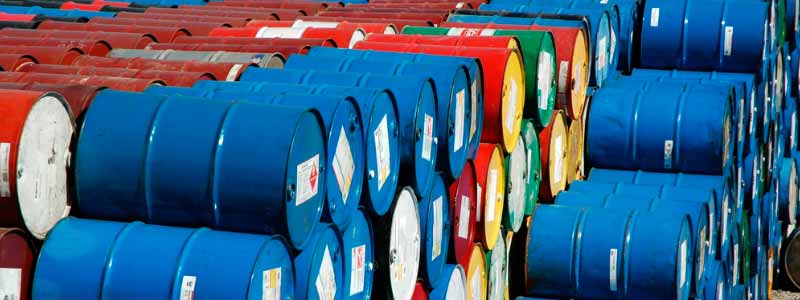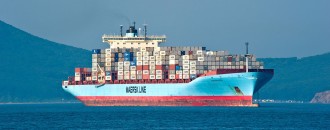
Lower commodity prices will help reduce India’s import bill
Bidhu Bhushan Palo | @TheDollarBiz  While earnings from agriculture exports are expected to decline slightly due to the prevailing low prices of commodities, India’s overall import bill is expected to decline significantly due to lower prices of oil and gold in 2014-15, which will help reduce the country’s trade deficit. Earlier this month, the World Bank projected that prices of most primary commodities have declined since last year and are expected to remain weak in the remaining months of 2014 and through much of 2015. The trend is partly due to a slowdown in the Euro Area and emerging economies, a strong US dollar, increased oil supplies, and good crop prospects. There are several positives in the changes for India. John Baffes, Senior Economist, Development Prospects Group, World Bank, told The Dollar Business that the expected price declines for grains may reduce India’s grain export earnings by about $1 billion, which is negligible compared to total food exports and relative to total exports.
While earnings from agriculture exports are expected to decline slightly due to the prevailing low prices of commodities, India’s overall import bill is expected to decline significantly due to lower prices of oil and gold in 2014-15, which will help reduce the country’s trade deficit. Earlier this month, the World Bank projected that prices of most primary commodities have declined since last year and are expected to remain weak in the remaining months of 2014 and through much of 2015. The trend is partly due to a slowdown in the Euro Area and emerging economies, a strong US dollar, increased oil supplies, and good crop prospects. There are several positives in the changes for India. John Baffes, Senior Economist, Development Prospects Group, World Bank, told The Dollar Business that the expected price declines for grains may reduce India’s grain export earnings by about $1 billion, which is negligible compared to total food exports and relative to total exports.
 John Baffes, Senior Economist, Development Prospects Group, World Bank (Pic. source - World Bank)
John Baffes, Senior Economist, Development Prospects Group, World Bank (Pic. source - World Bank)Baffes says, “India is a major producer of agricultural commodities, especially rice and wheat. However, it exported very little compared to the size of its agricultural sector (of over 250 million tonnes of food grains), about 11 million tonnes of rice, 6 million tonnes of wheat, and close to 5 million tonnes of maize. Taken together, exports of food commodities represent about 1.5% of GDP and about one-fifteenth of total exports.” Rice, which has bucked the trend, is expected to help offset much of the loss in export earnings. While, international prices of food grains declined by 6% between April and August 2014, reaching a four-year low, international prices of rice, which is a main agri export from India, actually increased 13% during the same period. More importantly for India, prices of two main import commodities are expected to decline significantly in 2014-15. Crude oil has seen one of the sharpest declines, down more than 20% to a little over $80/barrel (bbl) in mid-October, from this year’s high of $108/bbl in mid-June. The World Bank expects crude oil to average $96/barrel next year. According to Baffes, “In 2013, India consumed more than 3.7 million barrels of oil per day, one million of which was domestically produced and the remaining 2.7 million barrels was imported. Just for comparison, global oil production reached 91 million barrels per day in 2013. The cost of India’s crude oil imports during the past three years has averaged $165 billion.” Gold prices are also on the decline. Baffes says, “Precious metals prices, including gold, are also under pressure as they are becoming less attractive to investors. Reduced demand by China will also contribute to the weakness in precious metals prices. We now expect gold prices to average $1,240/toz, down from this year’s $1,275/toz (gold price reached a record high of $1,670/toz in 2012).” Given India’s net importer status in both crude oil and gold (largest and second largest import items, respectively), the price declines will reduce the country’s import bill, Baffes told The Dollar Business. With crude oil accounting for about a third of the import bill and nearly two-thirds of the trade deficit, lower prices translate into significant improvement in its terms of trade. The value of gold imports is estimated at $53 billion in 2012, easing to $39 billion in 2013 as policy restrictions took effect. Price declines are also expected to take place in edible oils (set to decline 6% this year on top of last year’s 8% drop). While low prices may play a part in higher imports by India, overall trade deficit is expected to decline. “As the current cyclical recovery firms in India and growth accelerates, import demand for these commodities should pick up. However, the effects of rising demand – particularly for oil – should be tempered by lower prices. Accordingly, the commodities trade balance which has gradually narrowed from about -7% in 2012 to -5.5% currently is expected to continue declining, which should help keep the overall current account deficit (CAD) contained,” Baffes adds.
This article was published on October 29, 2014.





 to success.
to success.